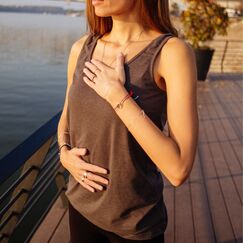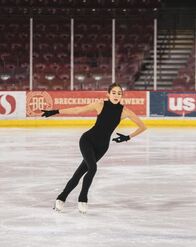|
7/23/2022 1 Comment Off-Ice Exercises for Figure Skaters To Improve Stamina And Help You Breathe EasyThe Secret to Being a Good Figure Skater Practicing Conscious Diaphragmatic Breathing While Standing Practicing Conscious Diaphragmatic Breathing While Standing It’s no secret that to be a good figure skater you must be a good athlete. And to be the best kind of athlete in any sport, you must include strength and agility, cardiovascular, plyometric, flexibility, psychological, and even dance training. For a great summary of some of the athletic demands of the sport, you can visit this video on the Olympic channel. Many elite level athletes also include yoga in their conditioning regimen. In fact, Professional teams such as the USA Women’s Soccer team, the NFL’s Seattle Seahawks, the NBA’s San Antonio Spurs, and the New Zealand All-Blacks, among others, have mandatory team yoga practice. Lebron James credits his yoga practice for helping the health and longevity of his career. Individual Olympians, such as Olympic figure skaters Evan Lysacek and Madison Hubbell have both been very open about their yoga practice and how much it has helped their mindset and performance. For some reason, though, many skaters and coaches think of yoga purely as flexibility training and only want teachers to work on the fun, deep, Instagram photo worthy poses. On the flip side, they think of yoga as a rest period for low impact days. Yes, yoga asana (the physical practice) can help figure skaters with flexibility, strength, and balance, and it can be a gentle practice for rest days, but it is so much more than that. Have you ever thought of yoga as off-ice endurance training for figure skaters?
1 Comment
Why Kids Figure SkateWhile we sometimes see intense skating parents that push their kids to the limits from a very early age, the reality is that most skating parents just want opportunities for their kids to have fun, grow, learn, build self-esteem, make friends, and succeed. We intuitively understand that play-based learning is crucial for our kids’ emotional, intellectual, social, and physical development, and we expose them to many different types of play—both structured and unstructured. In fact, play-based learning is currently the predominant theory in action in early childhood education. When you observe a skilled Learn to Skate USA teacher, you see the fun and the learning taking place. Not all the learning is easily observable—the life lessons may take some time—but as parents, we know they are happening. These are the reasons why we sign our kids up for skating. Kids, on the other hand, try skating because a friend or relative skates, or because they saw an ice show, or their favorite anime character or Peppa Pig tried it, and it looks cool. They sign up because they think it will be fun, and they stay with it when they make friends. If we become involved in figure skating to have fun and play, then why do so many young figure skaters eventually struggle with their mental health? |
Author // the skating yogiMy name is Sarah Neal. I have been immersed in the world of figure skating for over four decades. I have seen firsthand the abuse that happens at the higher levels of our sport and experienced how that trickles down into unhealthy training practices and habits at the grassroots. I have seen this play out in the operations of the very institutions that control our sport. Whether for a profession or hobby, pursuing skating should be a joyful, rewarding process, an opportunity for athletic and personal growth, and a place to build lasting friendships. Archives
March 2024
CategoriesAll Athlete Well Being Athlete Well-Being Deep Connections Embodied Movement And Meditation Practices Life After Competition Mindful Living |
Search by typing & pressing enter


 RSS Feed
RSS Feed